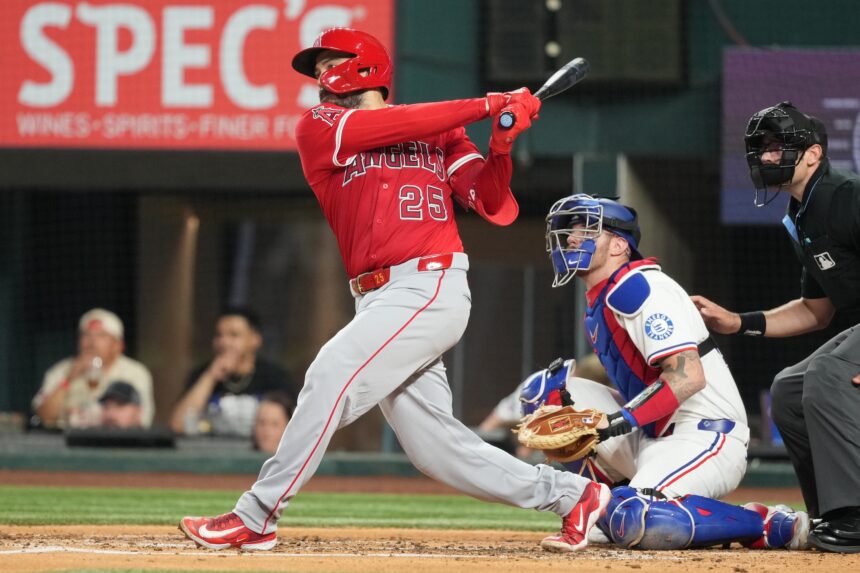The American League remains one of the most competitive landscapes in professional baseball. Each division features clubs with deep rosters, strong pitching rotations, and consistent offensive production.
The league’s balance of powerhouse teams and emerging challengers creates constant pressure for every franchise to adapt and improve. For the Los Angeles Angels, measuring up to the American League’s elite provides an essential way for fans to understand where the franchise currently stands at this stage in the season.
Tracking performance against these benchmarks offers insight into the progress already made and the remaining gaps.
Head-to-Head Against American League West Contenders
The American League West continues to define the Angels’ journey each season. Current standings show the Angels in fourth place at 62–70, trailing the Houston Astros at 72–60, the Seattle Mariners at 71–62, and the Texas Rangers at 67–67.
Divisional positioning reflects how critical these head-to-head contests remain. Success against division rivals sets the tone for the season and influences how teams are viewed in relation to the broader league.
The Angels’ current placement highlights the challenge of keeping pace with clubs with more substantial pitching depth and consistent offensive production.
These standings provide a valuable point of comparison for understanding how divisional results connect with league-wide races and discussions around postseason outlooks, which are often covered by resources available at FanDuel MLB betting.
Measuring Up to the East: Yankees, Orioles, and Rays
The Angels have faced challenges when crossing over with the American League East. Their record sits at 14–17 against that division this season, while their all-time mark is in the region of 1560–1692.
These numbers highlight the uphill climb against clubs that consistently rank among baseball’s most competitive.
Different team-building philosophies are visible within the East. The Orioles thrive through a youth movement, while the Yankees lean on a veteran foundation featuring high-end power. The Rays maximize value analytically, emphasizing situational pitching and efficiency.
The Angels, by contrast, have struggled with consistent contact and remain vulnerable to strikeouts. This imbalance has limited their ability to keep pace with the division’s stronger offensive clubs.
Central Division Crossovers: Guardians and Twins as Benchmarks
Cross-division contests with the AL Central offer another measuring stick. Since 1993, the Angels are 72–107 against the Cleveland Guardians, averaging 4.2 runs per game compared to Cleveland’s 5.0. Their history with the Minnesota Twins tells a different story.
Los Angeles holds a slight advantage at 92–78, with both clubs averaging 4.7 runs per game. These records reflect different team styles. The Guardians’ depth in pitching and consistent situational hitting have challenged the Angels in extended matchups.
The Twins, however, provide a more balanced comparison, with both teams demonstrating the ability to exchange runs and remain competitive. Fans looking to study similar team-by-team contrasts across the league can explore comprehensive MLB team overviews that break down rosters, strategies, and trends.
Talent Matchups: Star Players Across the League
While team records tell part of the story, comparisons between individual players highlight how Angels stars match up against the AL’s best. Mike Trout, despite injuries, remains central to the team’s offense.
Trout is hitting .235 with 20 home runs. Catcher Logan O’Hoppe adds production with a .227 average and 19 home runs. Comparisons show the contrast of output.
Aaron Judge of the Yankees is batting .321 with 40 home runs, Gunnar Henderson of the Orioles sits at .281 with 16 home runs, and José Ramírez of the Guardians is hitting .284 with 26 home runs.
These figures reflect the challenge of matching up with the league’s marquee performers. Trout and O’Hoppe demonstrate offensive power, though their susceptibility to strikeouts aligns with the broader team trend of below-average contact.
What the Comparisons Reveal About the Angels’ Path Forward
The analysis across divisions illustrates a mixed picture. Divisional struggles in the American League West underscore the difficulty of maintaining consistent positioning in a crowded field. The gap against the American League East highlights areas where roster construction and offensive strategy leave room for improvement.
Matchups with Central clubs show both vulnerabilities and competitive balance. Individual talent remains a strength for the Angels. When healthy, Trout continues to provide value, and younger players like O’Hoppe deliver flashes of production that keep fans engaged.
However, comparing the top AL stars and team results clearly shows that consistency remains critical for future competitiveness.



